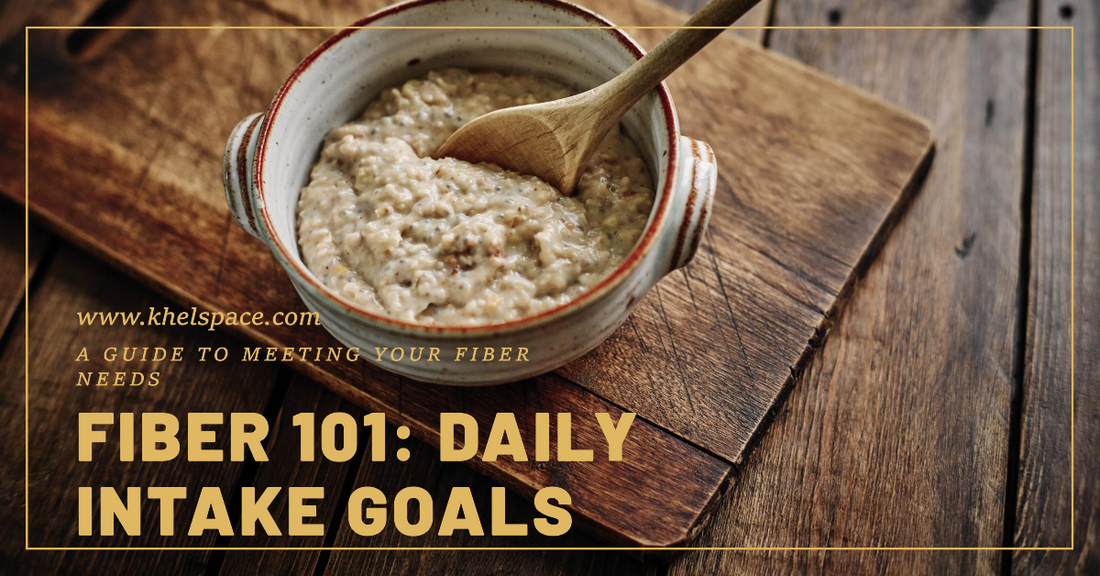How Much Fiber Should I Eat Per Day?
Guidelines advise different amounts of fiber depending on your age and sex. As you age, your fiber needs may go down.
According to the Food and Drug Administration (1), the Daily Value for fiber is 28 grams per day for adults on a 2,000-calorie diet. This number may also depend on age or sex.
The USDA’s Dietary Guidelines for Americans suggest the following amounts of fiber:
| Demographic | Recommended Fiber Intake |
|---|---|
| Women under 50 | 25 to 28 grams per day |
| Men under 50 | 31 to 34 grams per day |
| Women 51 and older | 22 grams per day |
| Men 51 and older | 28 grams per day |
Children ages 1 to 18 should eat 14 to 31 grams of fiber per day, depending on their age and sex (2). Even higher fiber intakes, seen in countries around the world, may significantly reduce chronic disease risk.
Fiber does digestive grunt work but doesn’t get the same glamour as vitamin D, calcium, and other nutrients. It’s important to get the right amount of fiber to keep your digestive system running smoothly. Fiber also provides a lot of health benefits beyond digestion, such as help with weight loss and with balancing gut bacteria.
The average American eats only about 16 grams of fiber per day (3). That’s quite a bit less than the daily recommended intake for a lot of people. Read on to learn more about the benefits of fiber, where to get fiber, symptoms of consuming too much fiber, and more.
References:
- Food and Drug Administration. Daily Value for Fiber
- USDA’s Dietary Guidelines for Americans. Dietary Guidelines 2020-2025
- National Institute of Diabetes and Digestive and Kidney Diseases. Eating, Diet, & Nutrition for Constipation in Children
- National Center for Biotechnology Information. Low fiber intake in US adults
The Vital Role of Fiber in Supporting Your Health
Fiber is essential for your health due to its numerous benefits:
-
Supports Weight Loss: Fiber helps you feel full for longer periods, reducing overall calorie intake and aiding weight loss efforts.
-
Reduces Cholesterol and Blood Sugar Levels: Soluble fiber, found in oats, beans, and fruits, can lower LDL cholesterol and stabilize blood sugar levels, reducing the risk of heart disease and diabetes.
-
Lowers Risk of Cardiovascular Diseases: By reducing cholesterol levels and stabilizing blood sugar, fiber contributes to a lower risk of cardiovascular diseases such as stroke and heart disease.
-
Increases Digestive and Bowel Health: Fiber adds bulk to stool, making it easier to pass through the digestive system and preventing constipation. It also promotes regular bowel movements and prevents gastrointestinal issues.
-
Fuels Healthy Gut Bacteria: Fiber acts as a prebiotic, nourishing beneficial bacteria in the gut. These bacteria play a crucial role in digestion, immunity, and overall health.
-
May Lower Risk of Colorectal and Breast Cancer: High-fiber diets have been associated with a reduced risk of certain cancers, including colorectal and breast cancer.
In general, “dietary fiber” encompasses the parts of plants and other foods that your body can’t digest. Your body does not break down fiber; instead, it passes through your system, easing symptoms such as constipation.
To reap the benefits of fiber, it's important to consume a wide variety of foods rather than relying on one source for fiber intake. Incorporating fruits, vegetables, whole grains, legumes, nuts, and seeds into your diet ensures a diverse range of fiber types and other essential nutrients.
Maximizing Your Fiber Intake: Tips and High-Fiber Foods
When it comes to boosting your fiber intake, opting for high-fiber foods is your best bet. Fortunately, many vegetables, fruits, and plant-based foods are naturally rich in fiber, making them ideal choices for a fiber-packed diet. If you find your body adjusting slowly to increased fiber, consider spreading your portions across multiple meals rather than consuming large amounts in a single sitting. To further enhance your fiber consumption, explore a variety of high-fiber foods.
Reference: Dietary Guidelines - High Fiber Foods
Fiber-rich foods
| Food | Grams (g) per serving size |
|---|---|
| split peas, cooked | 16.4 g per cup |
| lentils, cooked | 15.6 g per cup |
| black beans, cooked | 15.4 g per cup |
| lima beans, cooked | 9.2 g per cup |
| green peas, cooked | 8.8 g per cup |
| raspberries | 8 g per cup |
| cooked barley | 6 g per cup |
| oat bran | 6 g per cup |
| medium pear with skin | 5.6 g per pear |
| medium apple with skin | 4.8 g per apple |
| bran flakes | 5.5 g per 3/4 cup |
| cooked Brussels sprouts | 6.4 g per cup |
| almonds | 3.6 g per 1 oz. |
| chia seeds | 8.4 g per 1 oz. (2 tbsp.) |
Sources of Fiber by Type
Fiber is a vital component of your diet, existing in three primary forms: soluble, insoluble, and fermented fiber.
-
Soluble Fiber:
- Description: Soluble fiber dissolves in water, forming a gel-like substance in your digestive system. This gel slows down digestion, which can have beneficial effects on your health.
- Benefits: Soluble fiber is known for its ability to lower cholesterol and regulate blood sugar levels.
- Sources: Some common sources of soluble fiber include oats, barley, legumes (such as beans and lentils), fruits (like apples, oranges, and berries), and vegetables (such as carrots and sweet potatoes).
-
Insoluble Fiber:
- Description: Unlike soluble fiber, insoluble fiber does not dissolve in water. Instead, it remains intact as it moves through your digestive tract, adding bulk to stool and promoting regular bowel movements.
- Benefits: Insoluble fiber helps prevent constipation and maintains the health of your digestive system.
- Sources: Whole grains (like wheat, brown rice, and quinoa), nuts, seeds, vegetables (such as broccoli, cauliflower, and celery), and the skins of fruits are rich sources of insoluble fiber.
-
Fermentable Fiber:
- Description: Fermentable fiber can be derived from both soluble and insoluble fiber sources, although it is more commonly found in soluble fiber-rich foods. This type of fiber undergoes fermentation by the beneficial bacteria in your colon.
- Benefits: Fermented fiber promotes the growth of healthy bacteria in your colon, which contributes to improved gut health and overall well-being.
- Sources: Foods rich in fermentable fiber include legumes, oats, barley, fruits, vegetables, and some types of whole grains.
By incorporating a variety of foods rich in soluble, insoluble, and fermentable fiber into your diet, you can support your digestive health and overall wellness.
Other Tips on Increasing Your Fiber Intake
It’s best to gradually add fiber to the diet. You don’t want to shock your system with too much bulk. “Start low, go slow,” as the International Foundation for Functional Gastrointestinal Disorders puts it. Here are some tips for adding fiber — but not too much:
-
Eat Whole Fruits: Choose whole fruits such as pears and apples instead of drinking fruit juices. Whole fruits provide more fiber and additional nutrients compared to juices.
-
Opt for Whole Grain Foods: Replace refined grains with whole grain options like brown rice, whole wheat bread, and whole grain pasta. These choices are higher in fiber and offer more nutritional benefits.
-
Snack on Vegetables: Instead of reaching for pretzels and chips, snack on raw or lightly cooked vegetables. Vegetables are naturally low in calories and rich in fiber, making them an excellent choice for snacking.
-
Incorporate Beans and Lentils: Make beans and lentils a part of your daily diet. These legumes are versatile, high in fiber, and can be added to various dishes like soups, salads, and stews.
-
Sprinkle Chia Seeds: Add chia seeds to your meals by sprinkling them on top of cereal, yogurt, smoothies, or salads. Chia seeds are packed with fiber and offer additional health benefits such as omega-3 fatty acids.
-
Stay Hydrated: Ensure you're drinking plenty of water when consuming fibrous foods. Fiber absorbs water as it moves through the digestive system, so staying hydrated can help prevent constipation and promote regularity.
-
Track Your Fiber Intake: Keep track of the foods you eat and their fiber content to better understand your fiber intake. This can help you make adjustments to ensure you're meeting your daily fiber goals.
-
Consider Fiber Supplements with Caution: While fiber supplements can be helpful for some individuals, they should not replace a balanced diet rich in whole foods. Aim to get most of your fiber from natural food sources.
-
Listen to Your Body: Pay attention to how your body reacts to changes in fiber intake. Some individuals may experience digestive discomfort when increasing fiber intake. Adjust your intake accordingly and consult with a healthcare professional if needed.
References:
Symptoms of Excessive Fiber Intake
Fiber, also referred to as "bulk" or "roughage," plays a crucial role in digestive health. However, consuming large amounts of fiber can sometimes lead to discomfort and various symptoms. While there is no specific daily upper limit for dietary fiber intake, it's essential to be aware of the following symptoms that may indicate you are consuming too much fiber:
-
Gas: Excessive fiber intake can lead to increased gas production in the digestive tract, resulting in flatulence and discomfort.
-
Bloating: Fiber absorbs water in the digestive system, which can sometimes lead to bloating and feelings of fullness.
-
Constipation: While fiber is often recommended to prevent constipation, consuming too much fiber without adequate hydration can actually exacerbate constipation and make bowel movements difficult.
-
Diarrhea: On the other hand, excessive fiber intake, particularly soluble fiber, can have a laxative effect and lead to loose stools or diarrhea.
-
Abdominal Cramping: Some individuals may experience abdominal cramping or discomfort when they consume large amounts of fiber, especially if their digestive system is not accustomed to it.
If you notice these symptoms and suspect they are related to your dietary fiber intake rather than another condition, such as the stomach flu, it may be beneficial to reduce your fiber intake temporarily and see if your symptoms improve.
However, if you experience severe symptoms or if your symptoms persist despite reducing your fiber intake, it's crucial to seek medical attention. In rare cases, excessive fiber intake can lead to complications such as intestinal obstruction, where a blockage prevents the passage of contents through the intestines.
Disclaimer
The information on this blog is for educational purposes only and is not intended as a substitute for professional medical advice, diagnosis, or treatment. Always consult with a qualified healthcare professional before making any changes to your diet or lifestyle.





